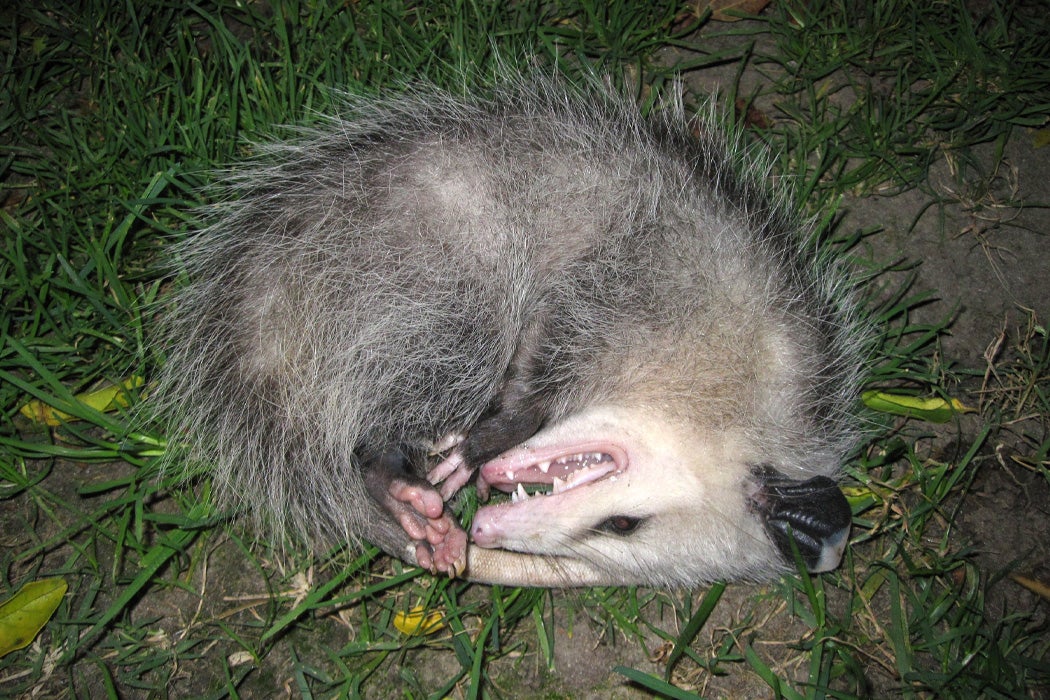The phrase “playing possum” derives from opossums’ habit of feigning death when faced with a threat, in the hopes that a predator will lose interest in the corpse. Opossums may be the most famous practitioners, but a variety of animals, including many insects, frogs, and snakes, are all known for “death-feigning” behavior. Where did this behavior come from?
Death-feigning has long been mysterious, given the enormous risks involved. As noted by biologists Atsushi Honma et al. in Proceedings: Biological Science, for death-feigning to work, a lot of things have to go well. A death-feigning animal is gambling that a predator won’t simply keep attacking. The behavior is useless if the predator has no problem eating a dead animal. Some predators will delay eating or handle limp prey differently, in which case feigning death might allow a chance to escape. Or, in a worse-case scenario, the death-feigning prey may just make the predator’s work easier.
Honma et al. also noticed that small grasshoppers, when feigning death, were immobile but did not look realistically dead. Upon closer inspection, it appeared that in fact the grasshoppers’ “death” posture actually caused them to stick various appendages out into different directions, growing their profile and making them much harder to swallow. So death-feigning, in this case, is a term based on human interpretation. The grasshopper is not really pretending to be dead, just making itself harder to eat.
There are other cases in which the animal’s feigned death is more convincing. In Brazil, biologists Fernando R. Gomes et al. observed that when confronted by a predator, S. hiamalis frogs feign death only some of the time. The researchers found that larger frogs were more inclined to jump for it. Frogs of all sizes were more likely to feign death in cooler temperatures. Frogs were also more likely to feign death upon first contact with a predator; if the predator persisted, then the frogs jumped. It seems that these frogs weigh the risks of feigning death. Larger frogs can presumably jump farther, so a jumping escape may be more successful. All frogs are slower in cooler weather and escape may be less likely to succeed. When a predator continues contact despite feigned death, however, the frog acknowledges that the ruse didn’t work and it’s time to scram.
Once a Week
In some cases, death-feigning is a last resort. Biologist Frederick R. Gehlbach notes that many snakes, when grabbed, thrash unpredictably in hopes that the predator will let go. After a period of thrashing, some snakes will feign death. The sudden transition from wild movement to stillness can be startling to a predator, sometimes allowing the snake to escape.
“Playing possum” is just one of a number of defensive options. There is great risk. But whether it’s consciously or unconsciously, the risk appears to be calculated. An animal will feign death when that technique offers the best chance of success.







